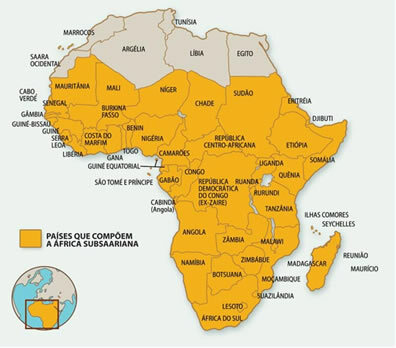North America is located in the far north of the Americas and is made up of just three countries: the United States, Canada and Mexico, in addition to territories of European domains, such as Greenland (belonging to the Kingdom of Denmark, with representation in parliament) and Bermuda (dependence British). The first two countries are the only ones on the American continent that are included in the group of the most important politically and economically, especially the United States, which has the status of greatest power worldwide; Mexico, on the other hand, is a developing country, that is, emerging.
A determining factor in the current condition of the aforementioned countries is the historical factor. Like all the nations of the Americas, the United States and Canada were also colonized by Europeans, however, the way they were developed was different, because while the center and south of the Americas were colonies of exploration, the nations in question went through a process of population. North America is also known as Anglo-Saxon America (English-speaking) or developed America.
Natural Aspects of North America:
North America is washed to the north by the glacial Arctic Ocean; to the west by the Pacific Ocean; and to the east, by the Atlantic Ocean.
Relief:
As for the relief, North America has basically three types, as occurs in most of the entire American continent.
• Western portion: home to a series of mountain ranges, many of which are active volcanoes and, therefore, there is a high occurrence of earthquakes. Among the many mountains present, the main ones are: Coastal Ranges, Sierra Nevada and the Rocky Mountains.
• Eastern portion: corresponds to regions where plateaus and mountains of ancient geological age are found and that have undergone several and long erosive processes. The main plateaus are: Labrador (Canada) and Mount Appalache (United States).
• Central portion: this region is home to extensive areas composed of plains, including rivers and lakes. The best known are: the plains of Lacustre (Canada), Mississippi (United States) and the plains of the Great Lakes.
Hydrography:
North America's hydrography is quite diverse. In Canadian territory, lakes predominate, there are at least 150,000 lakes, most of them glacial in origin.
The largest concentration of lakes in North America is located between the borders of the United States and Canada. The largest and most important lakes are: Superior, Michigan, Huron, Erie and Ontario, the first is 84,000 km.2.
As for rivers, in Canada what stands out is the São Lourenço River, because it serves as a waterway between the Great Lakes and the Atlantic Ocean. In the United States, the most important in terms of navigation capacity is the Mississippi River, other important ones are Colorado and Columbia, both used in irrigation and electricity generation.
North American Climate and Vegetation
Due to the territorial dimension, in North America different types of vegetative and climatic composition are developed. The main ones are:
Tundra: type of vegetation that develops from thaw. It is composed of lichens, mosses, herbs and short shrubs, due to the cold climate with long and rigorous winters.
Temperate Forest: this type of vegetation occurs in regions where a temperate climate predominates. It is characterized by having well-defined seasons of the year with cold winters and hot summers, the temperate forests are composed of deciduous trees and mosses, and there are cedars, oaks and Pine trees.
Steppe and Prairie: occurs in areas that have a semiarid climate, with high temperatures and long periods of drought. Due to this adversity, the vegetative composition is quite restricted with the presence of grasses and absence of trees.
Desert vegetation: develops in desert regions in the southern United States, bordering Mexico, and also in the Colorado River region. The climate is desert, so it is dry all year round.
Savannah: occurs in places where there is regular rainfall throughout the year and temperatures are always below 10ºC in the autumn and winter seasons.
Mountain vegetation: due to the altitude, the temperature tends to fall, thus, it has a climate similar to a cold climate; as for vegetation cover, there are few forms present.
Absence of vegetation: occurs in regions of North America that have very cold temperatures, that is, polar. This climatic adversity does not allow the development of any form of vegetation.
Do not stop now... There's more after the advertising ;)
Eduardo de Freitas
Graduated in Geography
Brazil School Team
America - continents - geography - Brazil School


